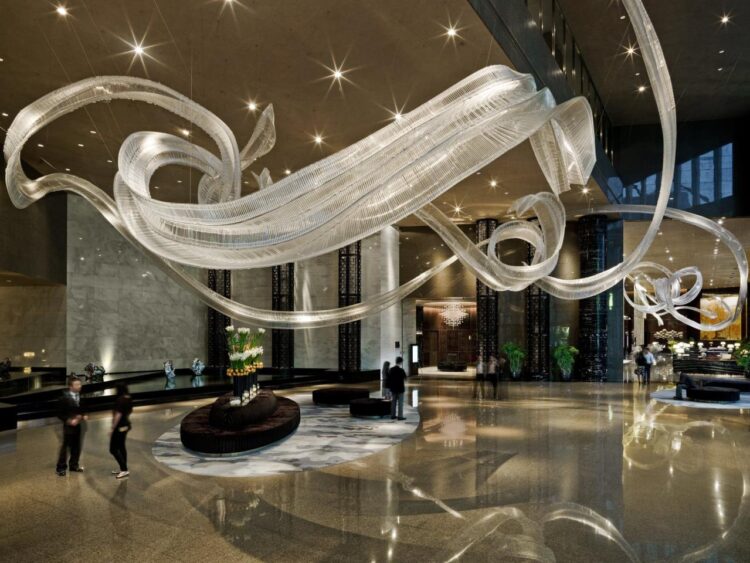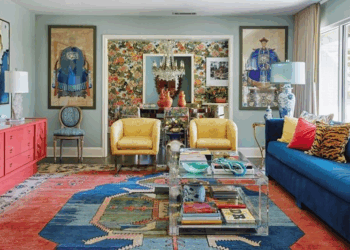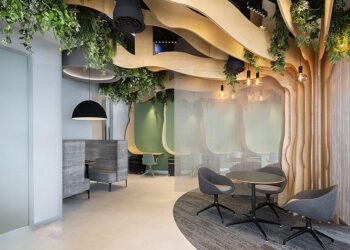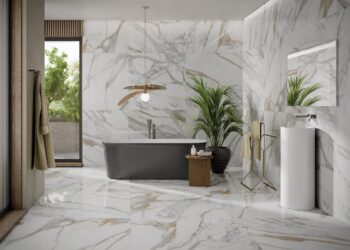When we think of interior design, most of us look straight ahead or maybe even down. We obsess over floors, furniture, and wall color, but often forget one of the biggest blank canvases in a room: the ceiling. Lately, however, this overhead space has been stepping into the spotlight with a bold new trend ceiling sculptures.
These 3D art installations are transforming how we perceive interior design. They’re no longer just decorative extras; they’re becoming focal points, conversation starters, and sometimes, even the soul of the space.
Why Ceiling Sculptures Are Trending
The rise of ceiling sculptures is no accident. Several design shifts and lifestyle changes have contributed to their newfound popularity.
A. They Add Depth and Drama
Flat ceilings are… well, flat. But when you add sculptural elements, the room suddenly gains dimension. Whether it’s a series of hanging geometric forms or flowing abstract shapes, ceiling sculptures create a sense of movement and depth that paint or wallpaper simply can’t achieve.
B. Open Concept Homes Need Vertical Interest
With more open concept living spaces, designers are seeking creative ways to add visual separation and character. A sculptural ceiling installation helps define different zones like a dining area versus a lounge without needing physical dividers.
C. They’re an Unexpected Canvas
The ceiling is often the most overlooked area in a room, which makes it the perfect place to surprise and delight. Ceiling sculptures invite people to look up and that alone adds a dynamic energy to the space.
Materials That Make It Work
Ceiling sculptures come in all forms, but certain materials lend themselves better to this elevated art form.
A. Metal
Aluminum, copper, and brass are favorites for a reason. They’re lightweight, reflective, and can be shaped into endless designs. Plus, metal catches the light beautifully, creating a shimmer effect that changes with the time of day.
B. Wood
For warmth and texture, nothing beats wood. Carved, layered, or suspended in intricate forms, wooden ceiling pieces can bring an organic vibe to modern or rustic interiors.
C. Fabric and Fiberglass
Soft, flowing installations made from fabric or molded fiberglass offer a sense of movement and airiness. These materials are often used in commercial spaces, but they’re slowly making their way into high end residential design.
D. Recycled Materials
Sustainability is on everyone’s mind, and ceiling sculptures are no exception. Designers are now repurposing old metal, plastic, or wood to create eco friendly art overhead.
Where Ceiling Sculptures Shine
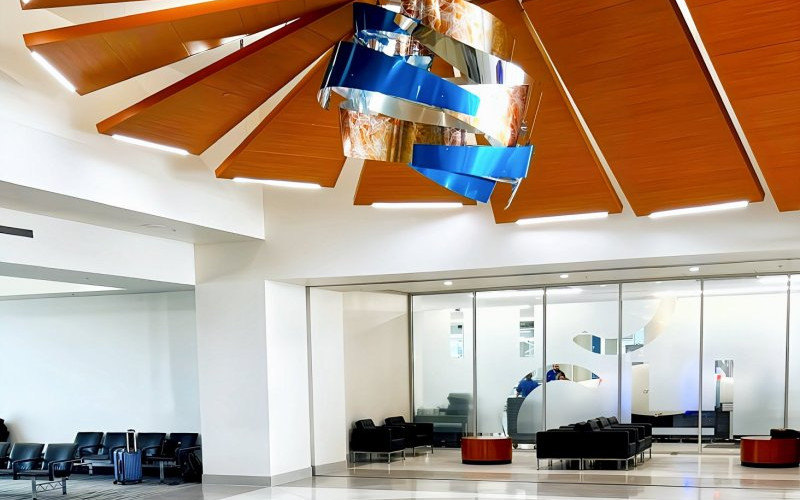
Not every room is right for a dramatic ceiling installation but when done right, it can completely transform the atmosphere.
A. Lobbies and Reception Areas
In commercial spaces, a striking ceiling piece in the entrance area sets the tone for the entire experience. It’s a branding moment, a wow factor, and an artistic statement all in one.
B. Living Rooms
In a home, a ceiling sculpture in the living room can become a talking point. It elevates the entire aesthetic and adds a sense of luxury or playfulness, depending on the design.
C. Restaurants and Hotels
Hospitality spaces thrive on memorable design, and ceiling sculptures make for unforgettable visuals. Think chandeliers taken to the next level or installations that ripple across the ceiling like waves or vines.
D. Offices and Creative Studios
Creative workspaces need inspiration, and what’s more inspiring than art literally hanging over your head? Ceiling installations here help fuel imagination and set a creative tone.
Things to Consider Before Installing One
As exciting as ceiling sculptures are, they do require thoughtful planning.
A. Weight and Structure
Not every ceiling can support a heavy sculpture. It’s crucial to work with an architect or structural engineer to ensure your installation is safe and secure.
B. Lighting
Proper lighting is key. The right illumination not only makes the sculpture pop but can also cast interesting shadows that change throughout the day.
C. Maintenance
Some materials are easier to clean than others. Dust and cobwebs love to hang out in high places, so consider how often and how easily the sculpture can be maintained.
D. Scale and Proportion
The size of the sculpture should match the scale of the room. A giant hanging piece in a tiny space might feel overwhelming, while a small one in a grand hall could go unnoticed.
How to Get Started
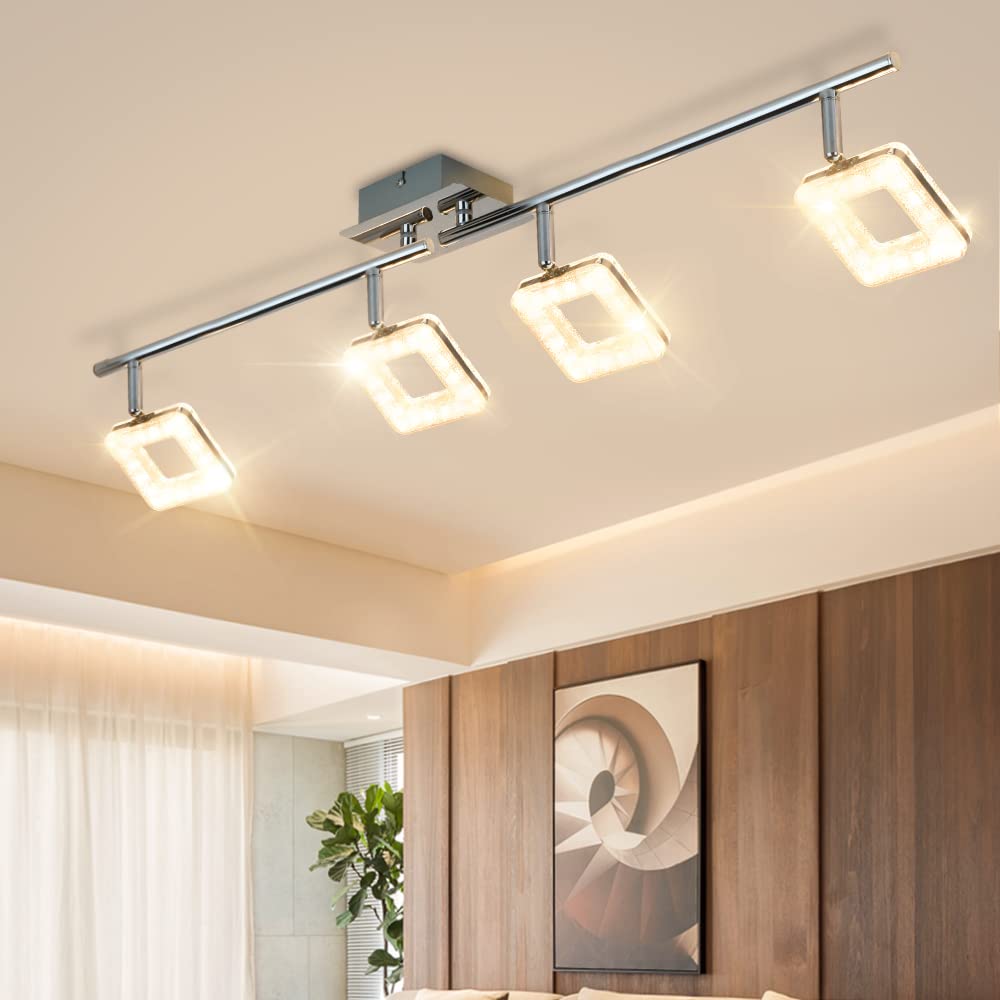
Thinking about incorporating a ceiling sculpture in your space? Here’s how to take the leap:
A. Start with a Concept
Don’t just hang something because it looks cool. Think about what story or emotion you want the sculpture to convey. Is it calming, energetic, futuristic, natural?
B. Work with an Artist or Designer
Custom ceiling sculptures often require collaboration. Find an artist or interior designer who understands your vision and can bring it to life in a safe and stylish way.
C. Consider Modularity
Some sculptures are built in pieces, which makes them easier to transport, install, and even rearrange over time. This can be a great option if you’re not ready to commit to a permanent fixture.
D. Use Technology
Many modern ceiling installations are interactive or tech integrated. Think of elements that move, light up, or even respond to sound. It’s not just art it’s an experience.
Final Thoughts
Ceiling sculptures are no longer just found in museums or five star hotels. They’re becoming a bold design element in everyday spaces, adding creativity and emotion where we least expect it. Whether you go with something sleek and modern or soft and whimsical, one thing’s for sure: when art meets architecture above your head, it always turns heads.
So next time you walk into a room, don’t just look around look up.

